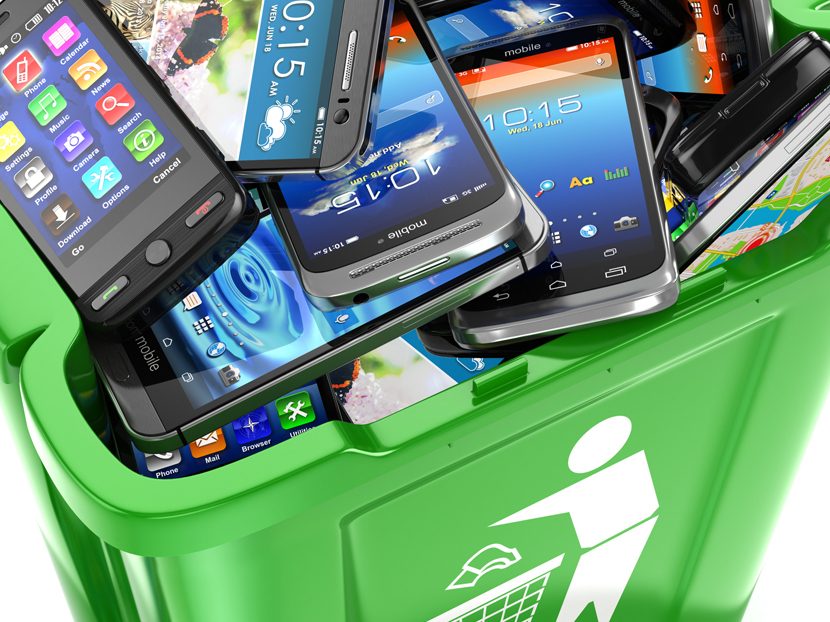The Electronics Supply Chain: Mining Metals Locally
Recycling e-waste rather than digging into the Earth for all the precious metals we need to make our new gadgets.

It is time to clean out the drawer in your house. Everyone has some version of this drawer that has slowly become a portable technology graveyard. It is likely filled with cords that don’t fit anything and a couple old cell phones.
Most of us save these e-devices for some unspecified reason. Now is the time to get rid of this stuff, but not necessarily as a decluttering exercise; think of recycling e-waste as a mining operation. The world needs the metals and materials from your electronic gadgets to reenter the supply chain.
I am guilty of hoarding old electronics. I have an original, round iMac that still works and a bunch of gadgets and old cell phones in a drawer. While that one iMac has a nice sense of nostalgia, almost every computer and phone since then no longer does anything for me. I always imagined that if tragedy struck and broke the newest phone I purchased, I could go back to the older device. Realistically, I wasn’t ever going back to my old phone. Once you use the faster, smarter, cooler phones, you don’t want to go back to your old electronic hermit crab shell. And so, I’ve decided to release my old gadgets from the technology purgatory drawer.
Meeting demand
Why is the gadget recycling task especially important now? One of the ripple effects of the war in Ukraine is the disruption of the nickel supply chain. This metal is still widely used for batteries. The BBC reports: “This volatility in the market for elements is causing chaos in supply chains that enable the production of electronics. Combined with the surge in demand, this caused the price of lithium - another important component in battery technology - to increase by almost 500% between 2021 and 2022.” (bbc.in/3ASMxTQ)
There are many tons of nickel, copper, lithium and other precious metals gathering dust in our collective electronic-holding chambers. These substances can be recovered and reused to augment the strained raw material supply chain. We need these metals to keep our electronics production up to short- and long-term demand.
In addition to boosting metal supply levels, recycling products like laptops saves the energy required to mine and ship the valuable materials all over the world.
The EPA found that recycling 1 million laptops conserves the same amount of electricity that could power 3,500 U.S. homes for a year. One million cell phones contain 35,000 pounds of copper, 772 pounds of silver, 75 pounds of gold and 33 pounds of palladium. For the plumbing and heating community, recycling old cell phones and computers could alleviate the supply chain strain on copper for our systems.
Recycling centers
Where can you take your e-waste? Don’t throw it in the trash. Those valuable metals are not the types of substances that you want to drink or inhale. The improper disposal of e-waste can result in the materials leaching into water supplies, or entering your lungs if waste is incinerated in your area. Google “Sustainable Materials Management (SMM) Electronics Challenge participants” to find a recycling center near you. Your cell phone company may also give you a trade-in price for an old phone. There are also third-party recyclers who may pay for some devices. (bit.ly/3aTzTcq)
A few additional tips for recycling computers and phones:
• Terminate your service.
• Clear the phone’s memory of contacts, photos and other personal information.
• Remove your SIM card.
Contact your wireless service provider for more information on safely donating your phone. Check to see if the program you are using works with certified third-party recyclers.
The baseline for recycling electronics is low. Of all the electronic items thrown away, only 17.4 percent valued at $10 billion were recycled in 2019. Most valuable e-waste ends up in a landfill. The total number of tons recycled properly was up 21 percent year-over-year, but there is still work to do. Each year, we generate roughly enough e-waste in the United States to cover the island of Manhattan.
A World Economic Forum report found that, “the e-waste material value alone is worth $62.5 billion, three times more than the annual output of the world’s silver mines and more than the GDP of most countries. There is 100 times more gold in a ton of mobile phones than in a ton of gold ore.” (Unprocessed gold ore also contains other solid solutions with silver, copper, nickel and palladium).
EaaS?
What are some creative ways to address this problem? Electronics as a service is one term for changing the way we use gadgets.
The World Economic Forum report describes how physical products can shift into services, “Some people use taxi hailing apps instead of buying a car or stay in someone’s spare room through Airbnb meaning less hotels are needed to cover peak times. These are all now services that were once only sold as physical products. The process is called dematerialization and is happening in many aspects of people’s lives. In the Netherlands, Signify (formerly Philips Lighting) sells lighting as a service, and in the UK, Rolls Royce sells airplane engine time rather than jet engines. These are examples of electronics as a service.” (bit.ly/3o9f67S)
Portable electronics could be sold more widely as a service. Many cell phone companies have trade-in programs, but historically, they were only for the people who needed a new phone every time the latest version came out. As cell phone materials become harder to find and more valuable, look for lease-a-phone business models to expand.
To keep the modern economy running, we need to bring old gadgets back into the mix. Trade in or sell the more recent gadgets, even if you only get a few dollars. While you are in the drawer, throw out the pens that don’t write well. You don’t need those either.





